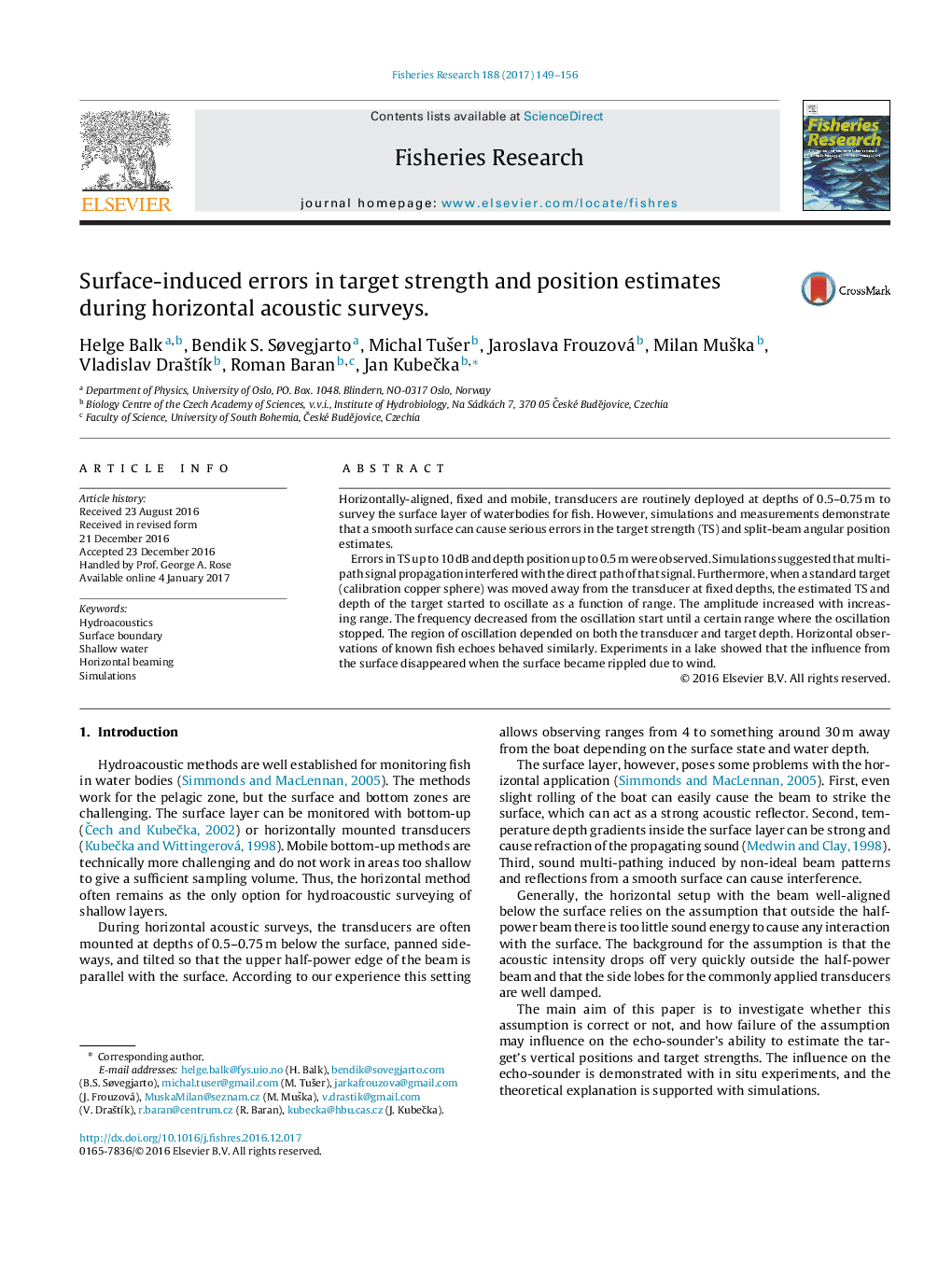| Article ID | Journal | Published Year | Pages | File Type |
|---|---|---|---|---|
| 5765601 | Fisheries Research | 2017 | 8 Pages |
â¢A smooth surface can cause serious problems for horizontal beaming in hydroacoustic surveys.â¢The problems can result in significant errors in the target size and depth estimates.â¢The reason to the problem is multipathing caused by side lobe effects and insufficient damping of the sound beam outside the nominal opening angle.â¢The phenomenon can be observed for both standard target and fish echo.
Horizontally-aligned, fixed and mobile, transducers are routinely deployed at depths of 0.5-0.75Â m to survey the surface layer of waterbodies for fish. However, simulations and measurements demonstrate that a smooth surface can cause serious errors in the target strength (TS) and split-beam angular position estimates.Errors in TS up to 10Â dB and depth position up to 0.5Â m were observed. Simulations suggested that multi-path signal propagation interfered with the direct path of that signal. Furthermore, when a standard target (calibration copper sphere) was moved away from the transducer at fixed depths, the estimated TS and depth of the target started to oscillate as a function of range. The amplitude increased with increasing range. The frequency decreased from the oscillation start until a certain range where the oscillation stopped. The region of oscillation depended on both the transducer and target depth. Horizontal observations of known fish echoes behaved similarly. Experiments in a lake showed that the influence from the surface disappeared when the surface became rippled due to wind.
